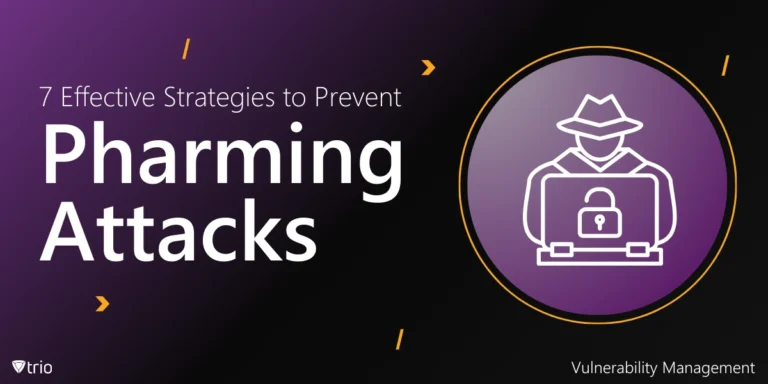As digital transformation is gaining traction, a proper working IT operation team is indispensable for the proper functioning of any organization.
Current IT systems are quite distinct, needing much more than just strong technical skills, as businessmen, project managers, and others should handle and smooth out the processes advancing the company’s aims.
The right steps and best practices to build an effective IT operations team are:
Assigning Authorities
At the outset, teams frequently accomplish their goals effectively if there is an accurate identification of members’ duties and roles. Depending on its size and kind, the organization’s job titles could include systems administrators, network engineers, support specialists and security analysts.
Ideally, every position would include information on the tasks required, the skills essential for doing them, along with their support of team goals. Reducing confusion and eliminating duplication increases productivity in a project thanks to the division of roles.
Recruitment of Talent
Choosing a team that reflects the essential mindset, the ability to handle problems effectively, and robust communication and relationship qualities is important for building a knowledgeable team.
Personnel selection criteria ought to include the capacity to perform a technical task as well as matching the cultural qualities of the organization.
Continuous Skills Development
Technology is dynamic, therefore while it is crucial for IT operations teams to gain and learn some concepts the knowledge must, of course, be refreshed from time to time.
Create training for the team members and support them get the certifications needed for their positions. Also, promoting and sustaining a learning environment can improve innovation because team members keep on experimenting with new technologies, methods or ways that improve team performance.
Promoting Collaboration
For efficient working, IT operations need the teamwork of the team as well as other departments of the organization. There is always coordination with other business units to be made in order to know their requirements as well as issues.
Concerning organizational communication, daily/weekly/daily cross-functional meetings might turn out to be useful to cut off the gap that separates IT and other departments and let the representatives of the companies share information as well as ideas.
Use of the project management software, as well as communication software, may also enhance relations between the members and various departments in the company.
Adopting Best Practices in ITIL and DevOps
It is direly important for IT operations to embrace industry best practices in an effort to increase efficiency and play the right role. ITIL is a framework that concentrates on how IT services can meet the requirements of business, while DevOps is conceived as a way of working that aims at allowing developers and operations staff to integrate and deliver resulting software continuously.
Using techniques from both ITIL and DevOps in developing a plan means that there is the increased capability of coming up with a mechanism that would help in the delivery of services in a far much faster way, resulting in a high satisfaction of customer service and reduced downtime.
Links Between Monitoring and Performance Metrics
It is important, furthermore, to confirm that performance is tracked and that those involved are accountable at all times. Various metrics can be outlined with reference to uptime, the time taken to fix incidents and customer satisfaction.
Some performance measuring and reporting tools are valuable for tracking performance and incidents, supplying real-time analysis of operational progress.
Regularly, organizations can run both reviews and feedback activities with the intention of finding troublesome areas and/or bolstering their areas of excellence.

Examples of IT Operations
IT operations refer to IT activities that include the management, delivery and support of IT services. These operations are crucial in businesses since they notify the state of readiness of any digital asset.
In the following discussion, we look at several examples of IT operations that demonstrate what these operations entail.
There is an example of network management as modern network management is statement oriented and requires a lot of text processing. It embraces the responsibility of managing a company’s network in order to assess, manage, solve, and secure a company’s networking problems.
Organizational systems involved in network management must provide high availability and good performance within intranet and internet structures to provide efficient methods of communication within the organization.
The other important area of concern is system management. It is the system administrators who are answerable for the hardware and software of the server. They administer user accounts, update applications, manage storage media solutions, and progressively evaluate system functioning. Being able to perform maintenance and updates consistently is important in order to practice good security and keep systems running therefore reducing time wastage.
Today organizations rely on specific services making it crucial for IT to manage those services being hosted within cloud environments. Some of the job responsibilities may consist of aspects such as resource acquisition, cloud protection, legal requirements and others.
According to cloud operation, resources can be easily procured and adjusted to support the organization based on the needs without spending a large amount of capital.
On most of the organizational set-ups help desks act as the first line when an employee has a technical complication. IT support staff consists of workers who solve various issues, satisfy inquiries, and educate people. With proper support services, it means that there will be a reduced likelihood of discomfort, which is essential for the productivity of the users.
Last of all, information management and data analysis include sorting, storage, and analysis of data for the need of managerial decisions in business units. IT operations responsibility is to follow data governance that affects data quality, availability, and security.
As new technological advancements keep growing and the amount of information being produced increases, businesses use analytics to make good decisions on customer preferences, the market, and even within operations.
But to obtain those skills, employees have to meet technical requirements and there are some certifications that the staff must have, in order to perform their functions effectively, depending on their professional interests and the areas of IT operations they are specialized in.
Here are some of the best-recognized IT operations certifications across different domains:
ITIL Certifications
- ITIL Practitioner: Very often the concepts explained by ITIL have to be actually put into practice.
- ITIL Intermediate: Specialization of the certification stream dealing with specific areas such as service lifecycle, operational support and much more.
- ITIL Master: This certification is aimed for the experts who work in the IT field and have sufficient experience in managing IT service management.
CompTIA A+
- Updating and controlling the frameworks of operating systems.
- Configuration of networks.
- Installation of security and troubleshooting hardware and or software issues.
CompTIA Network+
- Constructing and executing computer networks.
- Solving network problems and maintaining the organizational network.
CompTIA Cloud+
- Computing model, layers, design patterns.
- Overseeing cloud security operations.
- Maintenance of cloud infrastructure.
Microsoft Certified: Azure Administrator Associate
- Azure ID and governance.
- Physical and logical management of storage subsystems.
- Azure resource tracking and archival.
AWS Certified SysOps Administrator – Associate
- How to manage, deploy and operate large-scale systems on AWS
- Overseeing cloud materials.
- Support for response of incidents and events on AWS platforms
Red Hat Certified System Administrator
- Administration responsibilities of Linux.
- Managing printers and multi-media devices.
- Fundamental structures of networking and services.
Cisco Certified Network Associate
- Physical and logical security, and automation and programmability in Cisco networks.
- Internet and communication technology networks and services.
Google Professional Cloud DevOps Engineer
- Configurations as code (sequences of changes organically grouped into tangible entities).
- Performance evaluation and control.
- Infrastructure as code
Certified Kubernetes Administrator
- Installation, configuration, and use of Kubernetes.
- Networking, security as well as logging into Kubernetes.
- Monitoring and troubleshooting of cluster systems.
VMware Certified Professional Data Centre Virtualization
- Operating systems under VMware vSphere installation, configuration and management.
- Management and automation of virtual machines.
- Handling of virtualization of networks and storage.
What Does IT Operation Management Mean?
IT operations management can be defined as the management of the various aspects of IT, both hardware and software, in order to ensure that they deliver optimal services to organizations.
It consists of a large number of processes that are crucial for the activity of any company’s IT environment and is closely intertwined with overall organizational objectives. They are capacity management, performance, incident and problem management.
Most Commonly Used Tools:
-
- Monitoring Tools: Nagios, Zabbix, Datadog and SolarWinds.
- Automation Tools: Ansible, Puppet and Chef.
- Cloud Management: AWS CloudWatch for AWS environment, Microsoft Azure Monitor for Microsoft Azure environment and Google Cloud Operations for Google Cloud.
- Security Tools: Palo Alto networks, Crowdstrike and Splunk.
- Service Desk: Jira Service Desk, ServiceNow, and Freshdesk.
Building a functional team in IT operations within a robust IT infrastructure requires essential conceptual propositions and consistent dedication. For an organization to maintain a capable IT operations team, it’s essential to foster effective delegation, skill development, teamwork, and the introduction of best practices. A well-supported IT infrastructure strengthens the team’s ability to manage and respond to operational demands, ensuring streamlined processes and optimized technology resources that drive the organization’s success.
Finally, IT operations constitute more than a support team for the business; they are fundamentally a strategic unit that greatly influences the organization’s performance.
Trio Can Help You Build a Strong IT Team
Trio is a comprehensive solution for IT process automation and mobile device management, designed to simplify managing devices with diverse operating systems and various ownership and enrollment types. By restricting and overseeing devices across these operating systems, Trio enables efficient management of software, hardware, and resources for students, ensuring their access aligns with the added security, assignment criteria, and supported software requirements. This automation of IT processes streamlines device configuration, compliance, and access management, making it a powerful tool for educational institutions aiming to enhance security and control while supporting effective learning environments.
See Trio in Action: Get Your Free Trial Now!
Trio can get you started in securing, managing, and building a highly functional team to support the evolution of your IT operations. Schedule a free demo today.
Trio Business offers a comprehensive MDM solution for SMBs, simplifying device deployment, security, and monitoring. With features such as remote device lock and automated patch management, it focuses on enhancing productivity while ensuring security compliance.




